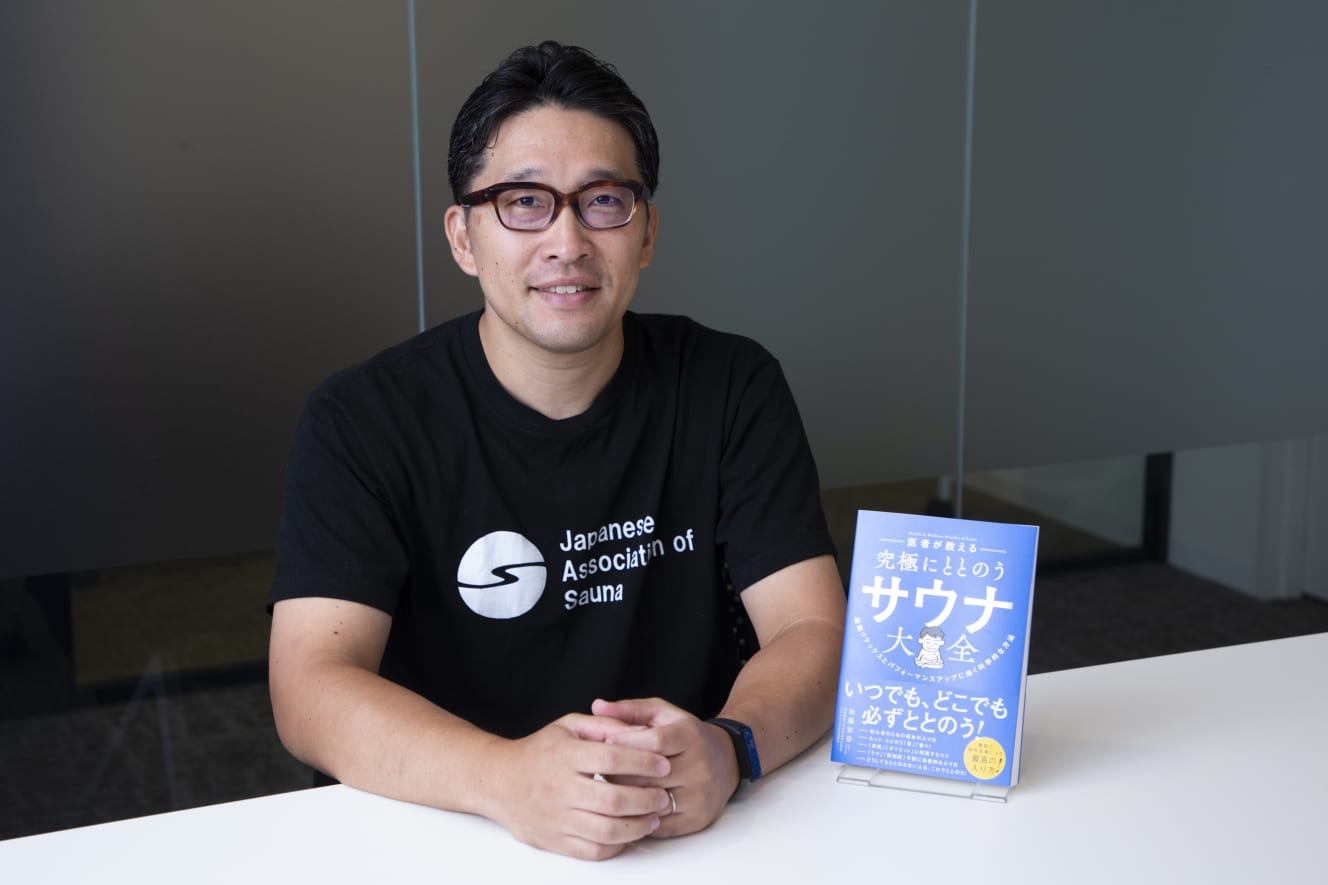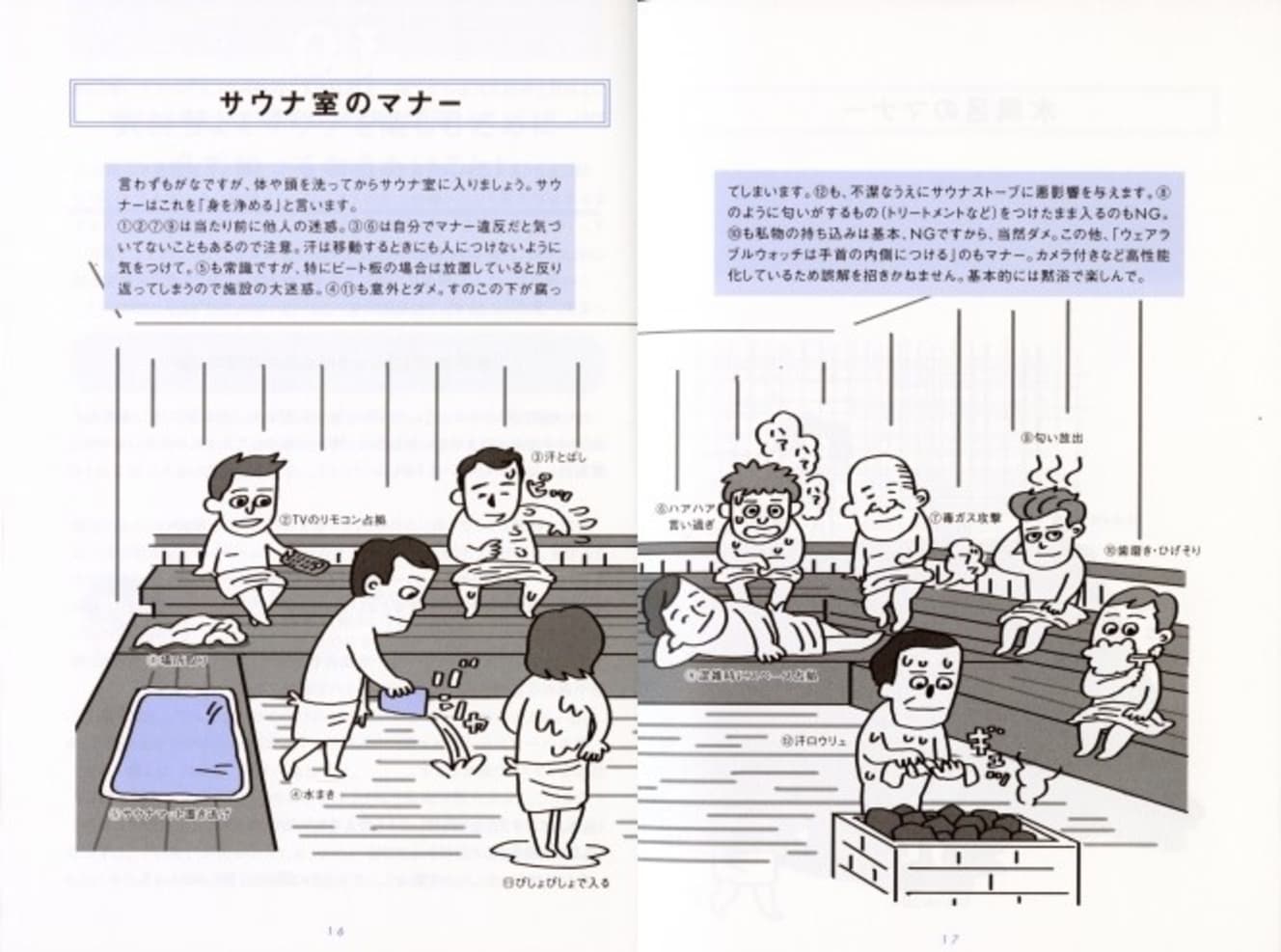What is “getting fit?” Sauna-loving doctors teach “the right way to get in and out” based on medical evidence.

An unprecedented sauna boom is continuing. New facilities are opening one after another across the country, and there are even waiting lists and admission restrictions for popular saunas. Saunas are so comfortable. But how much do we know about saunas? Even if we say things like, “I’m so relaxed,” do we know what it is like and why it happens?
We asked Dr. Yotaka Kato, a physician and author of “Doctors Teach: The Ultimate Guide to Sauna,” a book that uses medical evidence to explain such questions about saunas and the correct way to use them, about what “tono-no-to” means and how even beginners can use saunas.
In March of 2020, I published a book titled “A Doctor’s Textbook on Sauna. At that time, the COVID-19 crisis had just started, and I thought the boom would be over, but despite the headwinds, it kept on booming. However, despite the headwinds, the boom continued to grow.
For example, before the boom, there were few facilities with chillers, which cooled water, so cold water baths were a luxury. Before, the temperature was only about 14 to 15 degrees Celsius. This escalated to single-digit water temperatures, and the service became more extreme. If the water bath was cold, the sauna had to be hot as well, so the sauna was getting hotter and hotter, which I thought was a little dangerous. My previous book was an introduction to the many good things about saunas, but this time, I am not only introducing the good things, but also the risks.
Because of the boom in sauna use, a variety of information about saunas has appeared in the media. On the one hand, there are many people saying that saunas help people lose weight, detoxify the body, are bad for one’s health, etc., and there are many different theories. He says that his intention was to respond to the concerns of those who were wandering amidst such information.
Before he got into sauna, Mr. Kato himself thought the word “tonou” sounded spiritual and fishy. However, after trying the basic bathing method of sauna, water bath, and rest for three sets, as he was taught, he found that “my brain was awake and clear, but I felt relaxed. It was a feeling that was a little different”. This is what prompted him to begin researching saunas. So what exactly is “toning down”?

The body has several mechanisms to adapt to harsh environments such as saunas and water baths. Another is the body’s adaptation by producing substances called blood hormones. When you are in the sauna and water bath, the sympathetic nervous system, which is active during excitement and tension, is at work. When it’s time for a break, it switches to parasympathetic dominance, which is active when we are relaxed. The autonomic nervous system is an electrical activity, so the response is fast and the change is instantaneous, but hormones are substances, so it takes about two minutes to reach about 50% of their effect, and it takes a little time before they are metabolized and lose their effect.
The two do not often shift in daily life. But when you take a break from the sauna or water bath, when the autonomic nervous system switches rapidly from sympathetic dominance to parasympathetic dominance, the momentum is too rapid, and the hormones are still remaining. You relax in a situation where there are still excitatory substances, so a state of disconnection between head and body sensations is created. The head is clear with hormones, but the body is relaxed with parasympathetic nerves, which is a strange sensation, like an athlete’s zone.
Autonomic nervous system and hormones in the blood seem quite difficult to understand, but what should beginners do to become “in tune” with their bodies?
First of all, beginners tend to be in tune with their body naturally, so there is no need to worry. In fact, it is better not to overdo it. Advanced people have been in the sauna for a long time, so they have a good body. The load is totally different from a beginner who has not been in the sauna at all. It is important to enter the sauna at your own pace and not overdo it.
According to Mr. Kato, there are three things you should not do.
1. Don’t look at the clock
Do not look at the hourglass, 12-minute clock, or TV clock in the sauna room. There is usually a clock in the sauna room, but for some reason, many old men try to make a last-ditch effort. That’s dangerous and totally pointless, so let’s not do it.”
Don’t look at the thermometer
In dry saunas, the temperature is high to some extent, around 100 degrees Celsius, but it doesn’t feel that hot because of the low thermal conductivity of the air. But in wet saunas – saunas with high humidity – you feel quite hot even at low temperatures, so the temperature doesn’t mean much. In the past, there were only dry saunas, so the thermometer could be used as an indicator to some extent, but now there are many humid saunas, so it is completely meaningless.
3. Not looking at the amount of sweat
Many women often mistakenly think that because they have sweated so much, their bodies are already warm enough. In a sauna room, 30 to 50 percent of the water on the surface of the body is condensation, not sweat. Many people get a sense of satisfaction from the amount of sweat, but it is not very reliable. It is important to get out when you feel that your body has warmed up properly. If you feel hot, just get out. If you are prone to hot flashes, cover your face with a towel.
Another thing you should never do is enter a sauna after drinking alcohol. In this book, Mr. Kato uses himself as a test subject, taking a sauna while intoxicated and describing the changes that occurred in his body.
I had a feeling that I was going to be all right. I had told my friends and the people at the facility about it, and I thought I had taken all the proper precautions to get in. I thought I would be fine even if I was drunk, as long as I was rational, but it was a terrible idea. When I looked up, my heart rate had increased tremendously, but I didn’t notice it at all.
Before that, I had done a challenge to see how high my heart rate would go if I endured to the limit in a non-drunken condition, and I left the race because it was so hard. However, my heart rate was higher than it was at that time, and I realized that it was really dangerous. I could still go in if I wanted to, so this was a death. Now I understand why 80% to 90% of sauna deaths in Finland are said to be alcohol-related.
Kato has used the device to measure changes in heart rate and time in various situations. The data is included in this book, but in the end, he says, it is difficult to say exactly what kind of drinking is best for each person, as the way the pulse rate rises and falls, as well as the sympathetic and parasympathetic nervous system patterns, vary widely.
If you say 10 minutes, some people will go in for more than 10 minutes, no matter how hard they try. I think that 10 minutes is just a guideline, and I would like people to use it as a base to find the best way to enter the sauna for themselves.


PHOTO: Shinji Hamasaki
